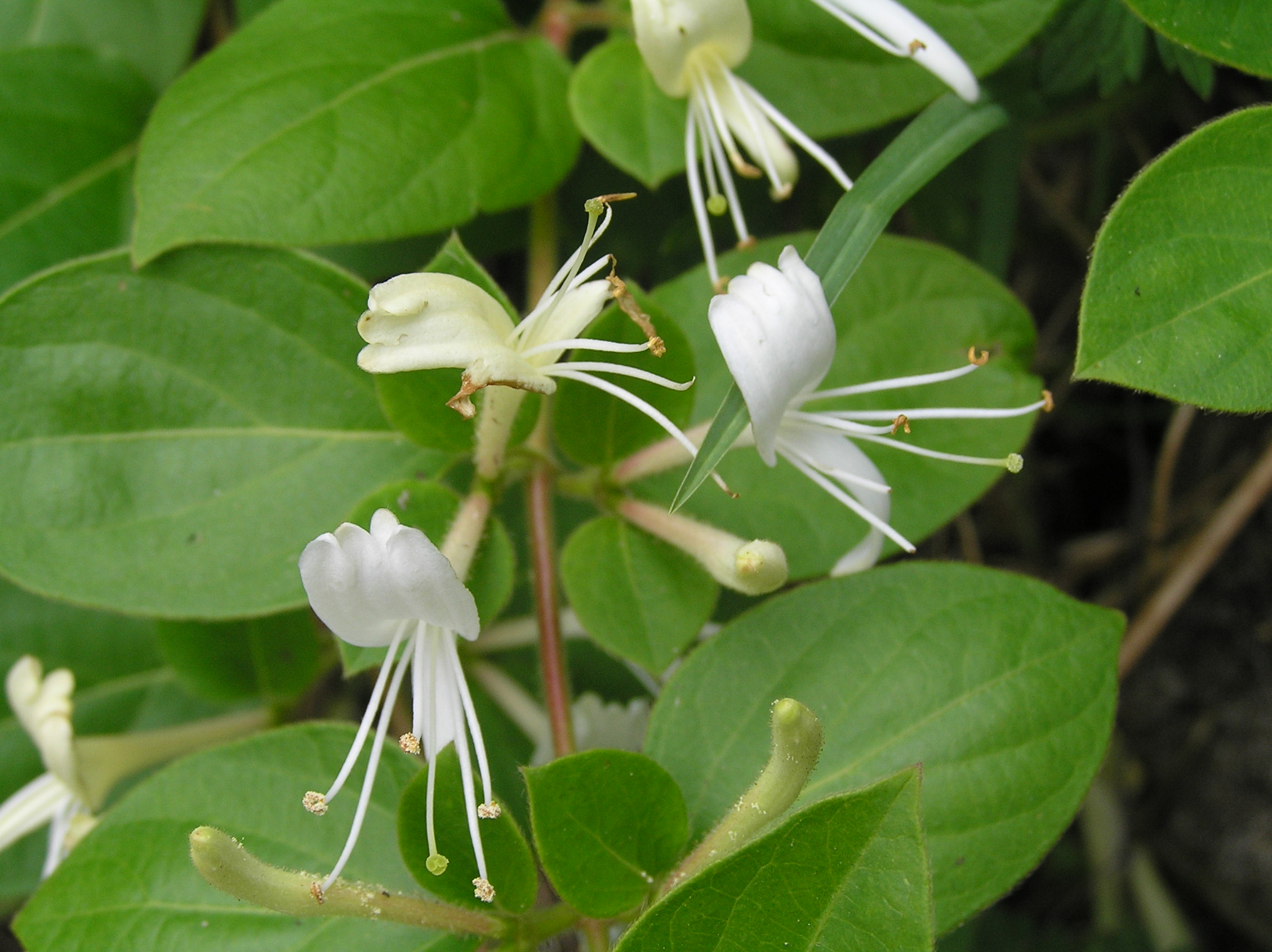
Yesterday, my wife and I enjoyed a lovely walk along the beautiful Rotary Walkway at Farm Cove. While strolling, we spotted a patch of Japanese honeysuckle flowering along the bank. The flowers grow in pairs from the leaf axils, forming tubular blossoms with stamens and styles extending from the corolla. When they first bloom, they are pure white, gradually turning to a soft yellow, which is why they are called “gold and silver flower” (金银花) in Chinese. The fragrance is rich and sweet, inviting passersby to pause and admire. Inspired, my wife shared an old story she remembered: in Eastern Asia, Japanese honeysuckle symbolises undying love, with its twining vines representing bonds that can’t be broken—a reminder of connection and resilience in the natural world.
However, in New Zealand, Japanese honeysuckle tells a different story as an invasive plant, outcompeting our native flora. This plant, though once planted as an ornamental, has become highly invasive, aggressively overtaking native plants and forests. With its fast growth, honeysuckle forms dense mats that smother native trees, shrubs, and ground covers, blocking out sunlight and preventing native plants from thriving. It can even climb high into the tree canopy, pulling down branches under its weight and disrupting habitats for birds and insects that rely on native plants. Without natural predators to control it, Japanese honeysuckle spreads unchecked, altering the biodiversity and balance of ecosystems wherever it takes root.
If you spot this vine on your garden, consider helping to control it. Here’s a simple removal guide:
- Cut the Vines: Start by cutting the vine near its base. This stops it from spreading further and detaches it from nearby plants and trees.
- Remove Roots: Carefully dig out the roots, as the plant can regrow if fragments are left in the ground.
- Dispose Responsibly: Avoid composting it, as seeds and stems can easily sprout again; instead, dispose of it through green waste services if available.
For more information on effective removal and to report infestations, visit the Auckland Council’s invasive species management page. Efforts like these are crucial for preserving New Zealand’s unique flora and ensuring that natural spaces like the Rotary Walkway remain vibrant and diverse.
By Mr Tuatara

© Copyright 2024 - PEST FREE HOWICK WARD
A Howick Local Board funded project
